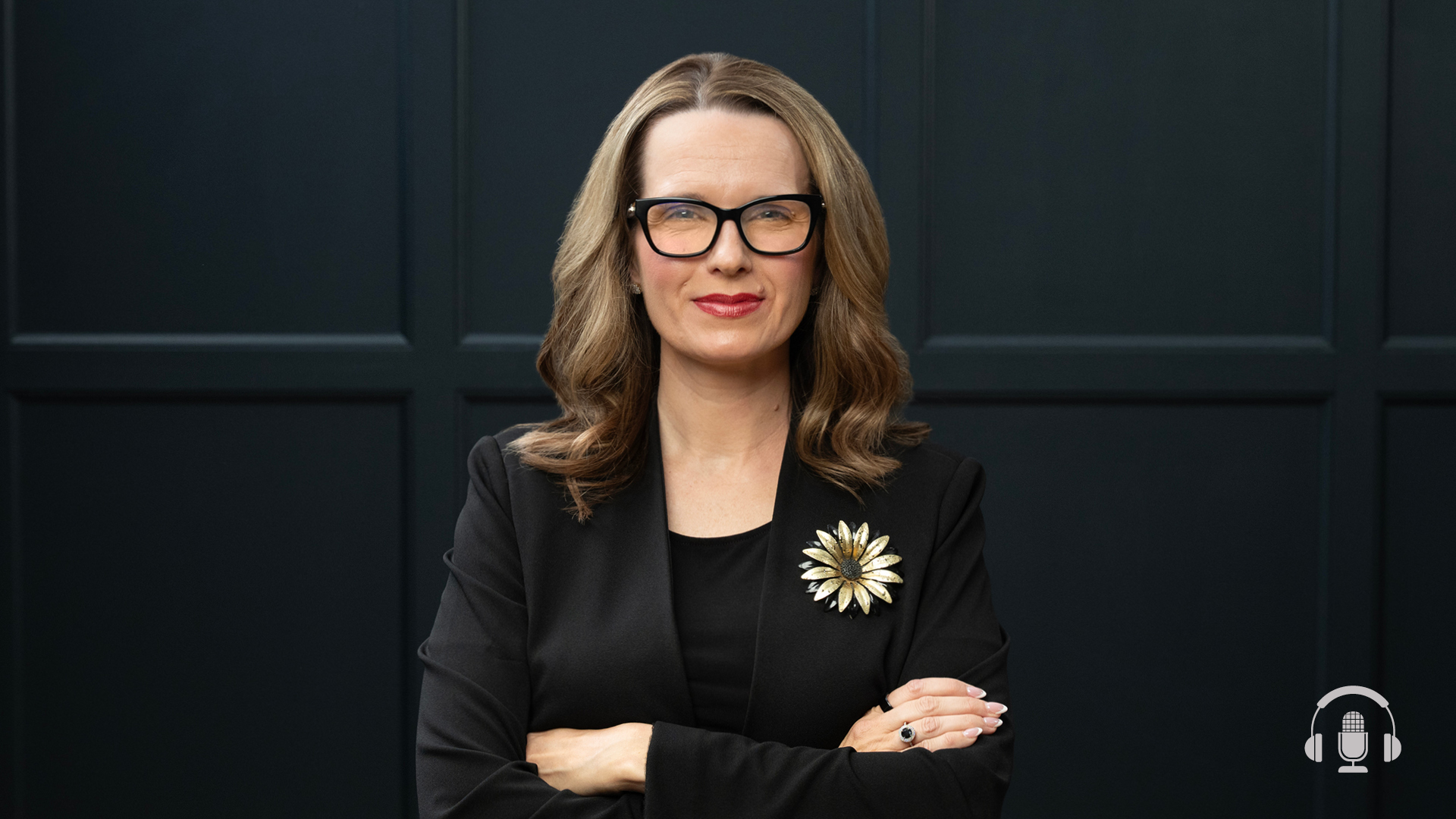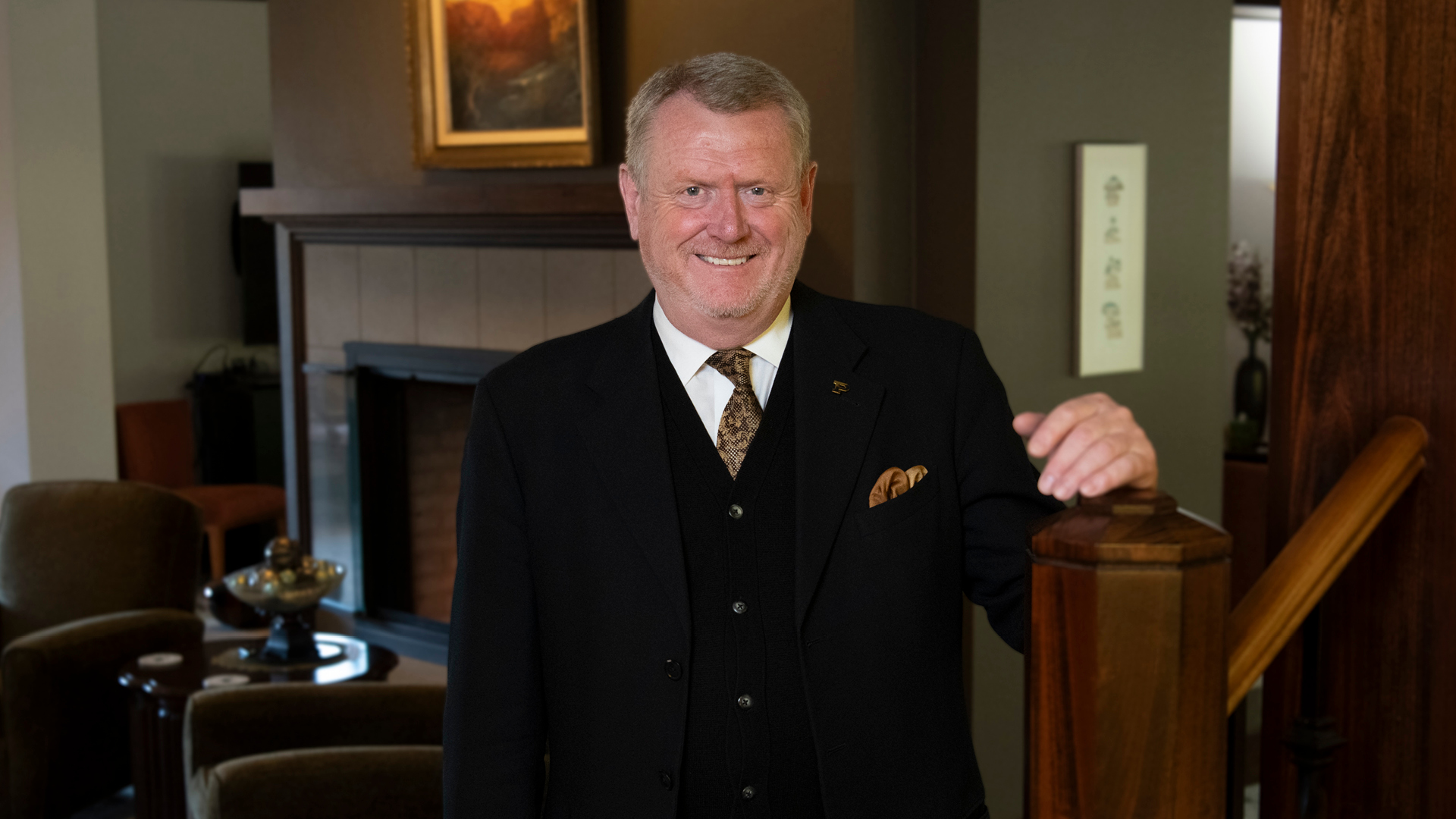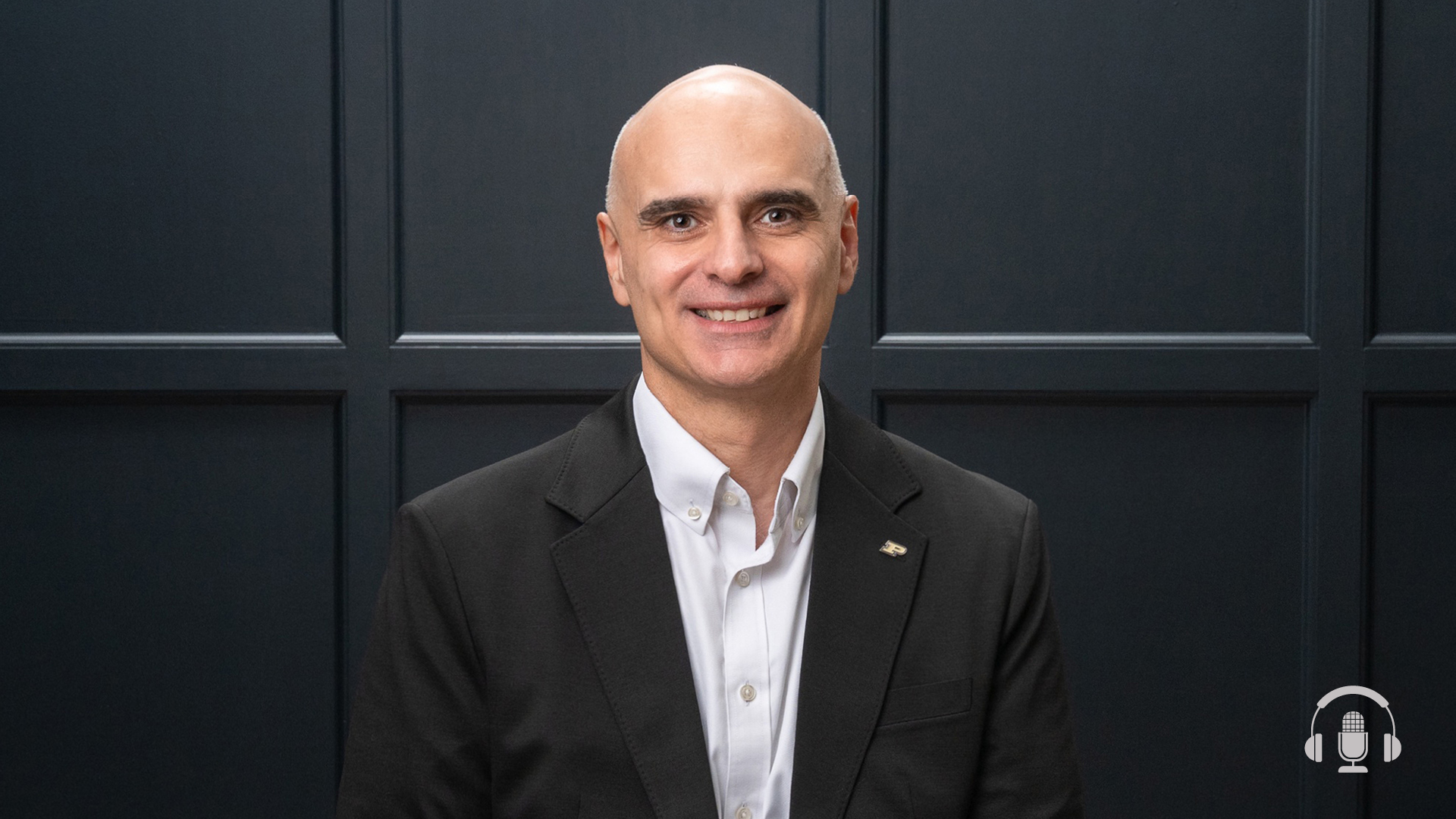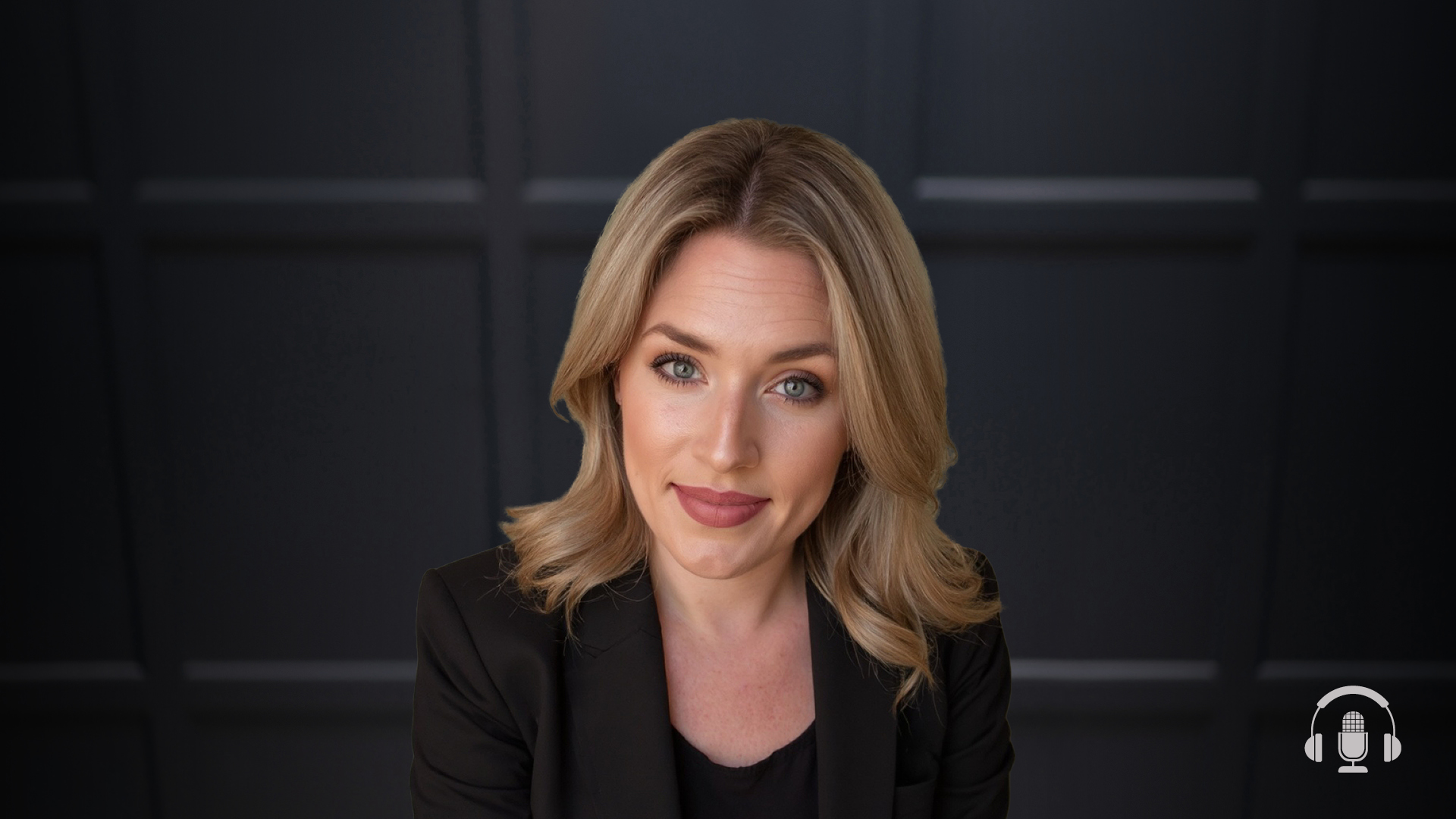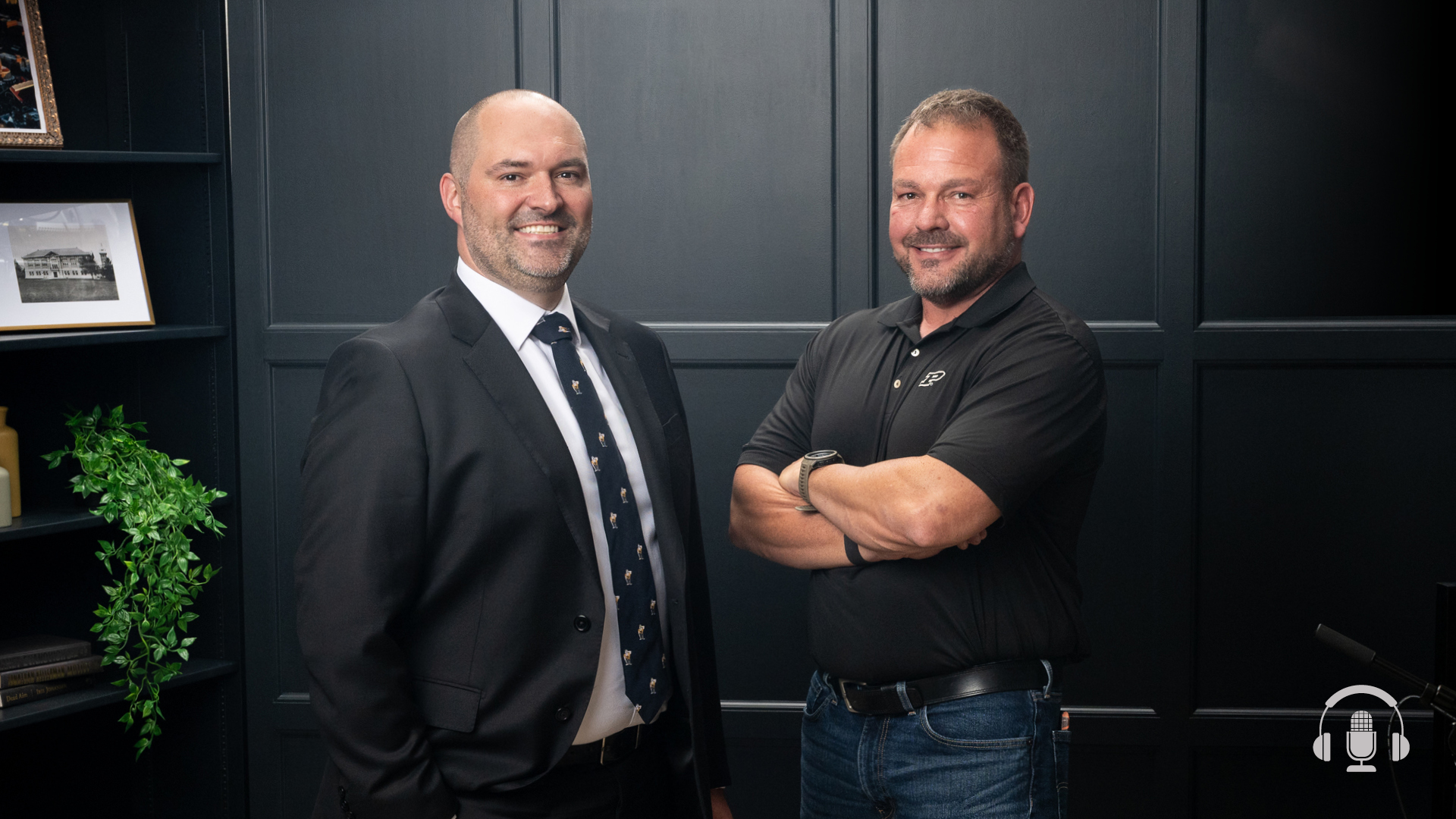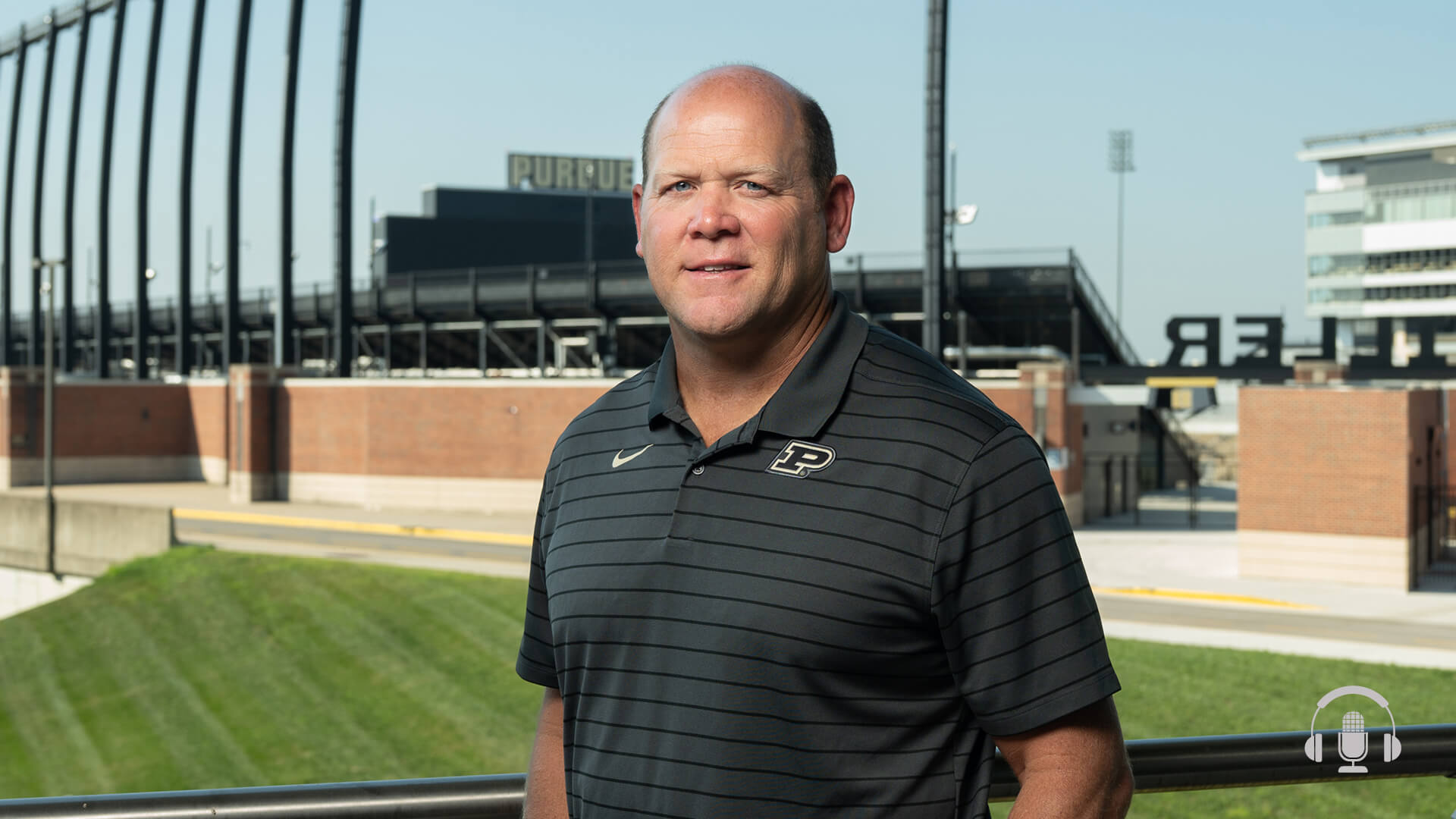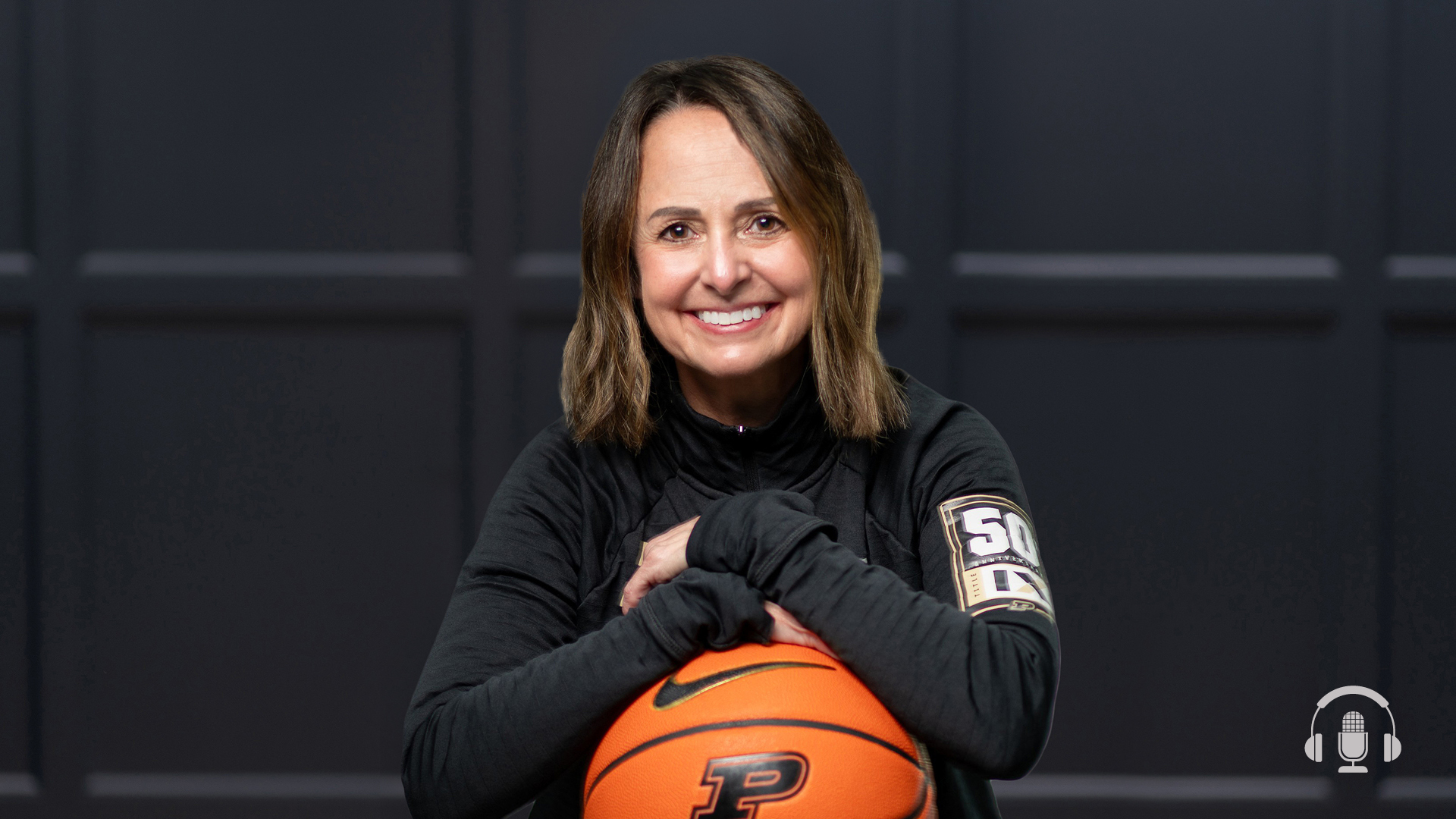Podcast Ep. 85: Purdue Research Series | A Look Into Semiconductors With Mark Lundstrom
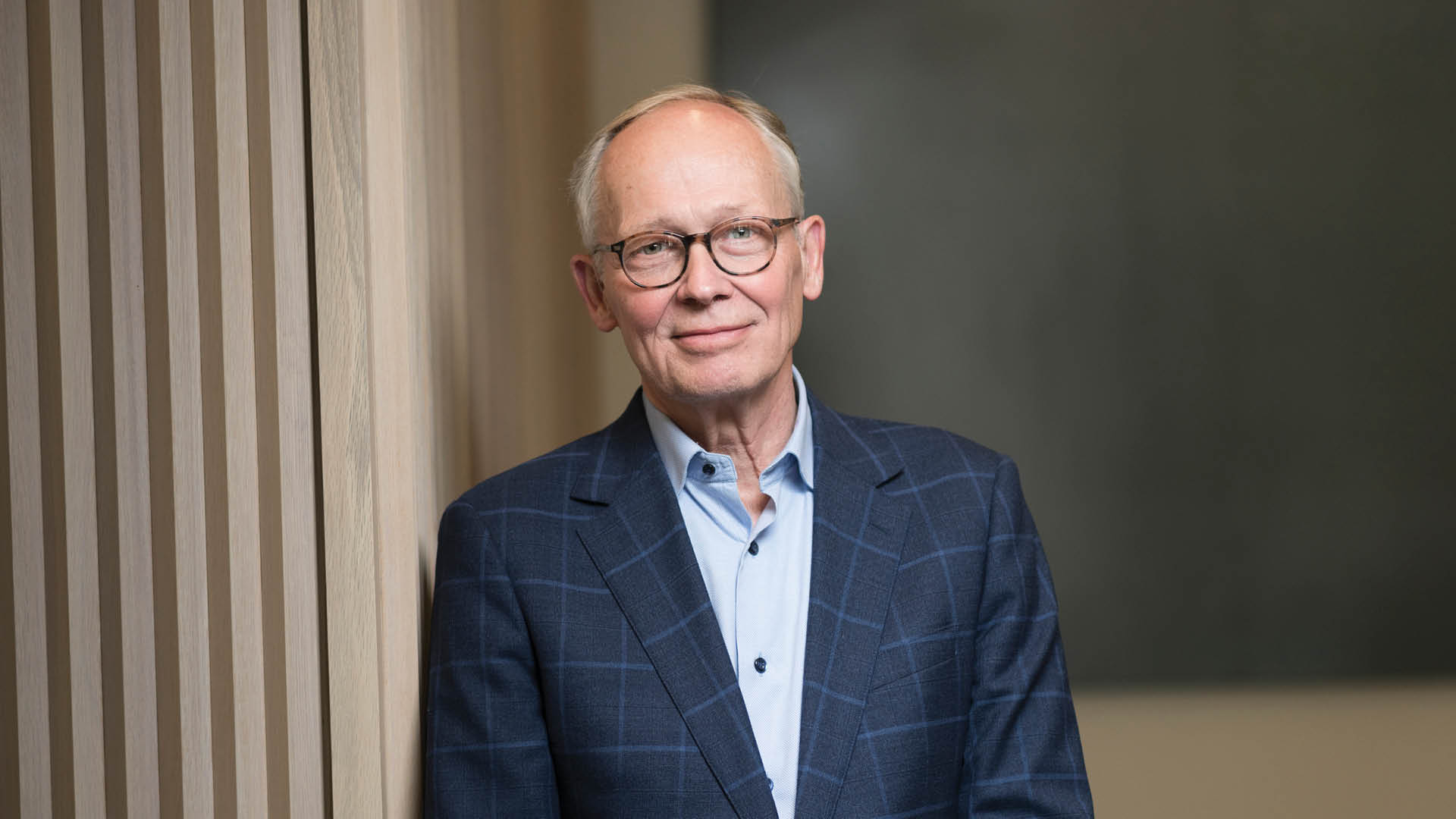
In this episode of “This Is Purdue,” we’re featuring the first guest in our Purdue Research Series, Mark Lundstrom, Purdue University’s chief semiconductor officer.
We’re sharing how Purdue provides practical solutions to the world’s toughest challenges in this new series.
As the United States strives to reclaim a leading role in the global semiconductor industry, Mark and other Boilermakers are acting to ensure our nation is prepared to meet the ever-growing demands for these essential components in virtually all of our electronic devices.
Mark dives into what semiconductors are, why they’re important and how Purdue is working hand in hand with semiconductor industry leaders to train the next generation of workers.
This isn’t a new role for the university. Mark explains Purdue’s storied history in semiconductor innovation, from alumnus Mohamed Atalla creating today’s most commonly used transistor back in 1959 to technology developed in Purdue’s Birck Nanotechnology Center that can be found in every Tesla car.
Tune in to learn about Purdue’s pivotal role in the development of semiconductor technology and why Mark describes this as a “Sputnik moment.”
- Learn more about semiconductor research and education at Purdue University
- Learn more about the CHIPS for America Summit
- Watch: Purdue is leading the way to fulfill U.S. semiconductor needs
- Fast Company: Why Purdue is all in on semiconductors
Full Podcast Episode Transcript
Mark Lundstrom:
This is Mark Lundstrom, and you’re listening to, This Is Purdue.
Kate Young:
Hi, I’m Kate Young and you are listening to This Is Purdue, the official podcast for Purdue University. As a Purdue alum and Indiana native, I know firsthand about the family of students and professors who are in it together, persistently pursuing and relentlessly rethinking. Who are the next game changers, difference makers, ceiling breakers, innovators? Who are these Boilermakers? Join me as we feature students, faculty, and alumni taking small steps toward their giant leaps and inspiring others to do the same.
Mark Lundstrom:
I’m quite certain I’m the only chief semiconductor officer in the US. I think it’s a reflection of the commitment that Purdue has as one of the largest STEM universities in the country. We feel it’s our responsibility to help the nation with the most significant challenge it faces right now.
Kate Young:
In this special episode of This is Purdue, we’re featuring Mark Lundstrom, the first guest in our Purdue research series. This new research series will tell the stories of how Purdue provides practical solutions to the world’s toughest challenges. Each episode will dive into a challenge the world faces like semiconductor workforce development shortages, and from there we’ll dive into these daunting problems with Boilermaker researchers who are working to find the solutions. After all, we weren’t named one of US News and World Reports most innovative US universities for the last five years running for nothing. Boilermakers aren’t afraid to tackle challenges. And in this episode, we’re highlighting how Mark Lundstrom is tackling future US semiconductor needs. See, the US invented semiconductors but only produces 12% of the world supply.
Mark and so many other Boilermakers are working to ensure our country is prepared to meet the ever-growing demands for these essential components in virtually all of our electronic devices. That’s right. If you are listening to this podcast on your smartphone or on your laptop or maybe in your car, all of these devices contain semiconductors or chips. So as the United States strives to reclaim a leading role in the global semiconductor industry, one university is leading the charge. Can you guess which one? Mark kicks the interview off by explaining his role at Purdue. It’s not CEO. It’s not CMO, not COO. It’s, well, CSO.
Mark Lundstrom:
Well, I have this unusual title. I’m the Chief Semiconductor Officer for Purdue, and I’m quite certain I’m the only chief semiconductor officer in the US. I think it’s a reflection of the commitment that Purdue has as one of the largest STEM universities in the country. We feel it’s our responsibility to help the nation with the most significant challenge it faces right now. So I’m working with an incredibly talented and hardworking group of faculty on a lot of different initiatives having to do with workforce and economic development, also working with a team in the state to bring more of this industry to the state.
Kate Young:
Now, if you keep up with the Purdue University news, you’ve likely heard the term semiconductor. For example, Fast Company recently named Purdue number 16 among the world’s most innovative companies and number one in education for its advances in semiconductors and microelectronics. It’s a hot topic lately, and we’re going to dig into the why behind. Mark explains what exactly semiconductors are and why they’re so incredibly important. So walk us through what a semiconductor is. Why is this important? You’ve said that if we didn’t have semiconductors, we would be living life like it was the 1950s still.
Mark Lundstrom:
Well, so what is a semiconductor? So I think most people know what a metal is, right? A metal conducts electricity well, and an insulator doesn’t conduct electricity like glass and a semiconductor is somewhere in between. So you think what’s the big deal? The big deal is that by introducing small amounts of other atoms in a semiconductor crystal, you can dramatically change its properties to make it more metallic or more semiconducting, and that’s how we make electronic devices like the transistor, which is the basic building block of all electronics. It’s made everything possible that we think about today. These smartphones that we carry around, they’re chock-full of chips. There are a few thousand chips in every automobile. I mean, it’s hard to imagine life without semiconductors.
Kate Young:
Absolutely. And why are they so important? Why is this research that Purdue is doing so important?
Mark Lundstrom:
The CHIPS and Science Act really has three objectives. One is to bring more semiconductor manufacturing back to the US because the technology was invented here. But over the past few decades, we’ve outsourced more and more of the manufacturing and we learned during COVID how vulnerable we are to chip shortages and our supply chains. So we won’t bring all of the manufacturing back here, but we need to bring a significant fraction back here. The other is that everything that we aim to do in terms of addressing all of the grand challenges we have will require more computing and more chips. Energy, clean environment, health, everything is going to rely on improved semiconductor technology. So we need to continue to advance semiconductor technology, regain our lead, and that’s what the CHIPS Act is all about.
Kate Young:
The CHIPS and Science Act that Mark just referred to was signed into law in August 2022 as an investment in the American ecosystem of microelectronics and semiconductor production. The $280 billion act has chips companies and government officials looking to Purdue for guidance on implementation that promotes innovation while creating the workforce of the future. We’ll take more into how Purdue is involved with building that future workforce later in the episode. But first, how did Purdue become such a leading charge in semiconductor research and education? Mark explains Purdue’s storied history in semiconductor innovation. From a Purdue alum creating today’s most commonly used transistor back in 1959, to technology developed in Purdue’s Birck Nanotechnology Center that can be found in every Tesla car.
Mark Lundstrom:
Well, we have a very long history in this space. We’re celebrating the 75th anniversary of the invention of the transistor this year, and that’s the basic building block of all electronic systems. A chip can contain as many as a hundred billion transistors these days, and it was invented 75 years ago at Bell Labs, Bell Telephone Labs. But Purdue was a hotbed of semiconductor research before that. In the 1930s and 1940s, the techniques that Bell Labs learned to grow high quality semiconductor crystals, they learned from Bell Labs. So we go back a long time. The most common transistor that is used these days is called a silicon MOSFET. That was demonstrated for the first time in 1959 at Bell Labs by a Purdue alum, Mohamed Atalla, a mechanical engineering alumni. So we’ve been teaching semiconductor courses since the late 1960s.
We’ve been a major supplier of talent to the semiconductor industry for decades. The research and innovation has been important. So every Tesla automobile has 48 silicon carbide power MOSFETs in it. That transistor was invented at Purdue, was demonstrated in the Cyprus Lab inside the Birck Nanotechnology Center by Jim Cooper, a faculty member here. We have a very long history in semiconductors.
Kate Young:
We had the honor of having President Chiang on the podcast. He said, “Purdue is the most consequential public university in America.” That’s what he believes. How does a semiconductor space and research correlate with what that statement means to you?
Mark Lundstrom:
I think that’s an interesting statement, and it’s a good challenge for Purdue. A university that wants to be the most consequential university in the nation should address the most consequential problem that the country currently faces. And that problem is the semiconductor challenge because it underlies everything else that we want to do. So I think the fact that we have made this not only an engineering priority, but a university priority. That we feel we have a responsibility to help the nation address this challenge. That’s what the most consequential university would do.
Kate Young:
What do you think would happen if Purdue wasn’t doing this research?
Mark Lundstrom:
Others would, right? Others would step up. We probably have one of the largest concentrations of semiconductor faculty of any university in the nation. And it’s more challenging to do this kind of work. You need expensive laboratory facilities like the Birck Nanotechnology Center. So it makes it difficult for many universities to really to have a substantial presence in this field. We’re one of the few.
Kate Young:
According to a 2022 Washington Post article, the US needs at least 50,000 new semiconductor engineers over the next five years to ensure a secure supply of semiconductors. Mark digs into why this talent shortage is a problem and how Purdue is working to solve it.
Mark Lundstrom:
Well, there’s certainly a high objective of the state of Indiana to bring more of this industry to the state. So this part of the country, not just Indiana, but the whole Midwest has been overlooked by this industry. But they’re giving us a second look now. And one of the reasons is when you ask CEOs of semiconductor companies, what’s your biggest worry about succeeding in our semiconductor challenge? They’ll say it’s the talents. Where are we going to find the people for all of these factories we’re building and the R&D labs that we’re building? And when you look in the Midwest, there is an awful lot of talent here. If you draw, I think it’s a 250-mile radius around Indianapolis, 30% of the engineering degrees are produced by the universities in that region. So this is really an untapped force of talent.
The other thing that these companies live and die by is innovation. So being located near a major research university, both for their workforce, but also for their research and innovation, it’s a factor that they consider carefully when they’re considering locations for new factories. So Indiana has a good business climate that’s favorable to them, but Purdue is also a major reason that companies are thinking about locating here.
Kate Young:
And Purdue knows a lot about innovation, right? The Purdue Summer Training, Awareness, and Readiness for Semiconductors, also known as STARS, is an eight-week program that is being offered this summer to develop deep tech skills like IC design, fabrication and packaging and semiconductor device and materials characterization. The STARS program will have two tracks, chip design and semiconductor manufacturing. It’s essentially the equivalent of a summer internship. Mark shares more about how STARS is aimed to reduce the semiconductor talent shortage.
Mark Lundstrom:
Well, over the past 10, 20, 30 years, as we’ve outsourced more and more of this industry, students just are paying less and less attention. They’re not aware of the opportunities because we’ve outsourced so much of that. So a big question that everybody has had is, are we going to be able to ignite student interest? Are we going to be able to get them interested in pursuing these careers? So STARS is actually a follow on to a brand new course that we offered in spring semester for the first time where it was a seminar course. Each week a company came in and talked about what they do, why it made the world, how it makes the world a better place, what kinds of career opportunities there are for you, no matter what your degree is. This is a follow on activity to give them a hands-on experience with semiconductors and prepare them for internships in these companies. Encourage them to pursue a semiconductor path or earn a certificate.
We had hoped the very first time that we’re offering the summer program, we might get 50 students, 500 signed up. Now we can’t accommodate 500. We’re probably doing a few more than we should have the very first time. I mean, I think this is a data point for the nation. Students are paying attention. They’re really excited about learning more.
Kate Young:
What kind of career opportunities exist? Can you give us a practical example of something if a student participates in the STARS program, what they could go on to do?
Mark Lundstrom:
There are so many different things that they could do. There are sort of three broad areas of activity in this industry. One is manufacturing, and that’s not just working in the factories that manufacture the chips, but it’s working in companies that produce the sophisticated tools inside the factories that do that. It’s all of the industrial engineering with the manufacturing flows. It’s all of the raw materials for the chemicals and the materials that go into the chips. It’s all of the data science to collect the data from the manufacturing process and the statistical quality control. So there’s a lot to do with manufacturing. The other is designing chips. So chips have gotten extremely sophisticated. More and more companies are concluding that they need to design their own chips because they’re the differentiating factor between products.
A high end leading edge chips with billions of transistors, they can take a team of hundreds of engineers. So that’s a really sophisticated, interesting process with lots of career opportunities there. And then there’s the packaging and testing and reliability after the chips are manufactured. So really, whatever your degree is in engineering, the physical sciences, data science, computer science, there are opportunities for you in semiconductors.
Kate Young:
I ask Mark why he thinks getting students involved in this talent pipeline to go into semiconductor education from a young age is so important.
Mark Lundstrom:
So that’s an interesting question too, there’s a lot of discussions going on. For the last 15 years, I think every year Purdue has said an enrollment record. We don’t actually have any shortage of students right now. Now, longer term, the demographic trends, we need to continue to work on that. Now, one of the challenges that this industry faces is that if a student doesn’t have algebra by seventh grade, it’s unlikely that they’re going to get into an engineering or physical science program. So pretty much the pipeline is fixed for the next decade. What we need to do is to encourage more of these students that are on their way to engineering and science degrees to think about opportunities in the semiconductor space.
Kate Young:
In July 2022, Purdue celebrated a major announcement. SkyWater Technology announced its plans to open a $1.8 billion state-of-the-art semiconductor manufacturing facility in the Discovery Park District at Purdue. This announcement means SkyWater expects to add 750 new direct jobs within five years after the opening of this facility. The Discovery Park District, a 400 acre mixed use development next to Purdue’s campus, provides investing companies access to Purdue faculty experts in the semiconductor field highly sought after graduates prepared to work in the industry and vast Purdue research resources. Mark explains the importance of these investments when it comes to Purdue continuing to make advancements in the semiconductor industry. So when we talk about Discovery Park and all of these companies are investing, they want to be right on Purdue’s campus. What is the importance of this and how can that also help fuel that pipeline and research at Purdue?
Mark Lundstrom:
For years, we’ve kind of struggled here at Purdue, we’ve been a major supplier of talent to this industry, but they leave Indiana and they go to California, Texas, New York, and other places. So I think having more of this industry close by will do a lot. It’ll provide opportunities for students. SkyWater is talking about having a significant number of its workforce be co-op and intern students. It’ll provide research opportunities for faculty to work on the challenges that these companies have. So you just look at what Silicon Valley has been able to do for Stanford and Berkeley. So this kind of relationship with companies that are nearby is really important and will do a lot for us.
Kate Young:
Mark recalls the time period during the COVID-19 pandemic when more and more people became aware of this semiconductor shortage.
Mark Lundstrom:
I think the chip shortage hit most people when they found out they couldn’t get an automobile because who understood that there were 1500 to 3000 chips in every automobile. And suddenly the auto manufacturers couldn’t obtain the chips that they needed. So that was probably the thing that was apparent to most people. Everybody was working at home buying computing equipment that’s chock-full of chips that created shortages. So I think that just raised everyone’s awareness about, “Hey, there may be a chip in my toothbrush. There’s a chip in everything.”
Kate Young:
Mark compares this shortage to Sputnik, the first artificial earth satellite that launched the beginning of a new era of political, military, technological, and scientific developments back in 1957.
Mark Lundstrom:
I’m old enough to remember Sputnik and it feels like a Sputnik moment. Suddenly my mother is saying, “I’m reading about chips.” And this is what I’ve done my whole career. Suddenly everybody is aware of this. And we just kind of had a wake-up call during COVID that, “Hey, chips are important.” And not only do we not have enough of them manufactured here, but we’ve also lost our lead in some critical places. And I think when we look at what we need to do in the future, and we realize how important it is, this technology is, we need to regain our leads. That’s going to be the challenge that the country faces. But it’s an exciting and important challenge. We’re eager to address it.
Kate Young:
And speaking of excitement, Mark shares his personal excitement behind some of these advances in technology over the past six decades when it comes to the semiconductor industry.
Mark Lundstrom:
This was a really exciting time because for the last 60 years, this technology has accomplished amazing things. But it was done with a very simple idea. In about 1965, Gordon Moore noticed that every year or two, there were twice as many transistors on a chip. And electronics became twice as powerful and it hardly cost anymore. And we’ve been doing that every two years for 60 years. We’ve just been making transistors smaller. We put more of them on a chip. We do it again in two years, we do it again in two years, we do it again in two years. And that’s exponential growth. It’s not as easy as it sounds. I’ve spent my whole career figuring out how do we make transistors smaller, but we’re close to the end. And when you can start to count the number of atoms in a transistor, it’s getting very, very difficult to make them smaller.
But we’ve developed this insatiable appetite for more computing, for more data, and we have to continue to increase the performance of our electronics. But this is what makes it so exciting. We’ll have to figure out new ways to do it. People have some ideas. More and more companies are designing their own chips because rather than purchase a commodity chip that can do anything that you program it to do, if you produce a chip to do exactly what you need it to do, you can get vast performance advantages that way. And more and more companies are finding that that’s the differentiating factor between their products and their competitors’ products. So we’re seeing more and more companies, every automobile manufacturer has announced that they’ll be designing their own chips. So more and more people working on semiconductors will not be employed in companies you think of as semiconductor companies.
Kate Young:
And what excites Mark about his personal research? Well. What do you think in your personal opinion, when you go home and tell your family, what’s the thing that makes you most excited about your research?
Mark Lundstrom:
About my own research? Well, I’m not going to answer that question. Because there’s one more research challenge that I want to have a crack at, and it has defied solution for 75 years in the semiconductor space. I don’t want any competition. I want to have a crack at it.
Kate Young:
Top secret.
Mark Lundstrom:
But I’m looking forward to having a go at that problem.
Kate Young:
Well, I can’t say I’ve ever had a guest refuse to answer a question on this podcast, but hey, Mark has a really solid excuse here. I asked Mark if he had any memorable moments he was especially proud of during his career at Purdue.
Mark Lundstrom:
So many of our students have gone out and now are leaders in the semiconductor industry, but [inaudible 00:20:26] periodically there would be these crises where everyone would think it’s the end of Moore’s Law. We can’t go any further. And this has happened two or three or four times. I think we actually are coming to the point where we’re reaching the end. But 20 years or so ago, we were at one of those points, and that’s really when I dove into that particular topic. And we looked deeply at transistors and how small you could make them. And we developed techniques for computer simulation that would simulate them when they’re as small as they could conceivably be made. And the result was we can continue to go for a long, long time. And we have in fact done that. So that was a lot of fun, to be able to look out 20 years and say, “No, it hasn’t stopped. We can continue to do what we have been doing for another 20 years or so.”
Kate Young:
And as for Mark’s favorite memories from his past 40 plus years at Purdue.
Mark Lundstrom:
I have lots of memories. I’ve been here long enough that I met Neil Armstrong and had dinner with him. That was kind of cool. And Gene Cernan, the last person to walk on the moon. So I was his faculty host the last time he visited campus, and that was just a remarkable experience. I took him around to classes, I sat him on a stool in front of the class, and he just talked. It was unbelievable. I was on the search committee that ended up bringing Mitch Daniels to campus. That was an interesting experience. So there’ve been lots.
Kate Young:
And speaking of Mark’s long tenure at Purdue, how has Purdue University’s Elmore Family School of Electrical and Computer Engineering changed and grown since Mark first arrived in 1980?
Mark Lundstrom:
Well, when I came, I remember one of the hot research topics was cellular phones. The things that we take, and we thought, this is a really long-term research project. We don’t know if this is ever going to work out. I mean, when you look back, things that you thought were nearly impossible and would probably never happened, almost everyone. Except for this one particular problem that I want to have a crack at, almost-
Kate Young:
That’s top secret. We’re not going to talk about it.
Mark Lundstrom:
That’s right. But the school is, well, it wasn’t electrical and computer engineering then. It was only electrical engineering. It’s probably three times bigger now in terms of the size of the faculty, it’s probably three times bigger in terms of the size of the students. So it continues to thrive and grow. It’s the largest department on campus right now.
Kate Young:
The School of Electrical and Computer Engineering is also the largest ECE program in the entire country. So as you’ve been listening to this episode, you’ve heard how driven, innovative, and persistent Mark is, especially within his career. But what does he enjoy doing in his free time? See, Mark has a passion for a certain type of vehicle. So we’ve heard that you’re a big fan of motorcycles, so we have to dig into the personal side of Mark really quickly.
Mark Lundstrom:
If you must.
Kate Young:
How did you get into motorcycles? Is it a hobby from when you were young or?
Mark Lundstrom:
I treated myself on my first job out of college in the seventies. We were living in Colorado in the foothills of the Rockies, and I bought myself a motorcycle, and we would drive up in the mountains in the weekends, and that was a lot of fun. When I came back here, life got busy with the kids and everything, and as my boys became teenagers, my wife said, You know, you’re setting a bad example for the boys. They might want motorcycles.” So I held off riding motorcycles for quite a few years, and it’s only recently that I’ve had a little more time that I’ve gotten back with it. And I’m going to go on a trip in the Blue Ridge Mountains. I had a colleague in Baltimore who sent me an email and he said, “Mark, I woke up in the middle of a dream and we were riding the Blue Ridge Mountains on our motorcycles.” So that’s what we’re going to do.
Kate Young:
What motorcycle will you be riding, do you have a favorite one?
Mark Lundstrom:
Well, I have two. I have a Harley-Davidson Fat Boy. That’s the bike that Arnold Schwarzenegger rode in Terminator two. So that’s a lot of fun. But I have an Indian Springfield, which is a larger bike that I ride when I take longer trips.
Kate Young:
And that’s what you’ll be riding with your friend?
Mark Lundstrom:
Right. Right.
Kate Young:
And speaking of Mark’s personal side, he reminisces on Purdue celebration for his service as interim dean of engineering, which included some videos from a few people very special to him. So during the celebration of your service as the interim dean of engineering in March, your grandchildren sent some special videos kind of commenting about what they think you do at work. Got quite the reaction from the crowd. What did that mean to you?
Mark Lundstrom:
Well, I have a very talented daughter-in-law. She’s always doing things like that. And it’s interesting. So that was a very special event. I thought it was a little bit over the top about what people were saying about me. I get way too much credit for what my colleagues do, but the one thing that people remember about that event was the video with my grandkids. So that was pretty special.
Kate Young:
Here’s Mark on what the Purdue community means to him. When you think about the Purdue community, you’ve been in it for over 30 years now, what does that spirit mean to you, that Boilermaker spirit? And why have you stayed here though?
Mark Lundstrom:
That’s an interesting question. People ask me, why have you stayed here for so long? Because my original plan was to stay for two years. A big part of it is to people. I have amazing colleagues, and if I were to go elsewhere, I mean these people, the reason I’m successful is because I work with these amazing people. I can’t leave them behind. The other is that anytime I had a challenge and I wanted to step up and do something bigger, Purdue was always there to support me. And then, you have students that have been in class, you see them go out and become successful. They come back and we give them awards and they talk about how important you were in their career, in their development. That’s what it’s all about. When you hear that.
Kate Young:
Who do you think of when you think of Purdue? Is there a specific person that comes to mind?
Mark Lundstrom:
There isn’t really a specific person. People come and go, but I think there’s a Purdue Boilermaker culture that just continues.
Kate Young:
Mark ended our interview by touching on that Boilermaker persistence, something he knows about firsthand. When it comes to all of the semiconductor research and education he’s done in his career, he’s had to get up and keep trying again and again and again. Mark loves the adventure of discovery. What does persistence mean to you? You talked about 20 years ago you thought that the research kind of might be concluding, and yet here we are 20 years later and it’s robust as ever, right? So what does that word mean to you?
Mark Lundstrom:
I think in that technology, I mean, there were so many things. I’ve been doing this since my first job out of college. [inaudible 00:27:09] never things I thought, “This will never, ever work.” But you just take one step ahead, make a little bit of an improvement, and you keep doing it and doing it and doing it. And it’s like compound interest, over time it just builds up. And you can get to amazing places. And I think personally that’s the same thing in my career. I’ve always, you feel you’re blocked. You feel you can’t accomplish what you want to accomplish, just try to take a small step forward. And if you keep doing that over time, amazing things can happen.
Kate Young:
And speaking of small steps, do you have in mind your next giant leap?
Mark Lundstrom:
The next year or two are just going to be intense as the CHIPS Act rolls out, there’s so much to do. I’m looking forward to things slowing down just a little bit. I have a couple of books I’d like to finish and I have this research problem I’d like to take a crack at. Those are the things that I’m looking forward to.
Kate Young:
We’ll have to interview you once you take a crack at that problem and figure out what it was.
Head over to our podcast YouTube page, youtube.com/@thisisPurdue to check out our full video interview with Mark. And if you’d like to learn more about all of the semiconductor research and education happening at Purdue, check out engineering.purdue.edu/semiconductors. We’ll link all of that in our episode show notes for you too. And stay tuned for our additional Purdue research series episodes. We’ll be dropping these episodes throughout the next few months. So subscribe wherever you get your podcasts so you never miss an episode. This Is Purdue is hosted and written by me, Kate Young. At this special podcast shoot for our first Purdue research series episode. Our videography was led by Ted Schellenberger in collaboration with John Garcia and Bad Boone. We also had production assistance from Carly Eastman and Sophie Ritz. Our social media marketing is led by Ashley [inaudible 00:29:00].
Our podcast photography is led by John Underwood. Our podcast design is led by Caitlyn Freeville. Our podcast team project manager is Emily Jesulaitis. Our podcast YouTube promotion is managed by Megan Hoskins and Kirsten Vorst. And our podcast research is led by Sophie Ritz. Thanks for listening to This Is Purdue. For more information on this episode, visit our website at purdue.edu/podcast. There you can head over to your favorite podcast app to subscribe and leave us a review. And as always, boiler up.
